Thank you to the Texas Peanut Producer Board for sponsoring this post. All opinions are my own. For more information on my sponsored post policy, please visit my disclosure page.

If you follow me on Instagram or Facebook, you may have seen that I traveled to Lubbock earlier this month to learn more about the peanut farms within Texas on the 2018 Texas Peanut Tour. It was a 2 day adventure that I will never forget – it was an amazing time and I learned so much about one of my favorite foods!

What did we do on the Texas Peanut Tour? – The full recap
After flying in on Wednesday evening, I checked into The Overton Hotel which is immediately off the Texas Tech campus. The hotel had a country chic vibe with an oversized leather chair which was perfect for relaxing. What also made the arrival even sweeter was that the Texas Peanut Producer Board had a peanut butter cupcake from The Ruffled Cup and a bottle of wine from Church House wine waiting for us.
After freshening up, I headed down to the lobby to meet up with the other influencers on the tour. It was such a wonderful opportunity to meet and experience this tour with Ramona, Nasreen, Breeze and Shelly from the Texas Peanut Producers Board.
From there, we boarded the party bus to head to dinner at Las Brisas Steakhouse. The chef at the restaurant was so creative and whipped up three different appetizers that featured peanuts in a unique way. First we had street tacos with a peanut sauce. Then we had ahi tuna with peanuts coated in wasabi (although all of the dishes were fabulous – this may have been my favorite because it was so unique).
And last, but not least, peanut bread – I had never experienced this kind of peanut bread before. It was so light and was the perfect balance between sweet and savory. It could be made sweet with some honey or butter and savory with a peanut sauce or even peanut butter. I’m still on the hunt for a good peanut bread recipe – so if you have one, will you send it my way? I would love to try to recreate it at home. After this amazing meal, we headed back to the hotel for a bit of rest before our big tour day on Thursday.

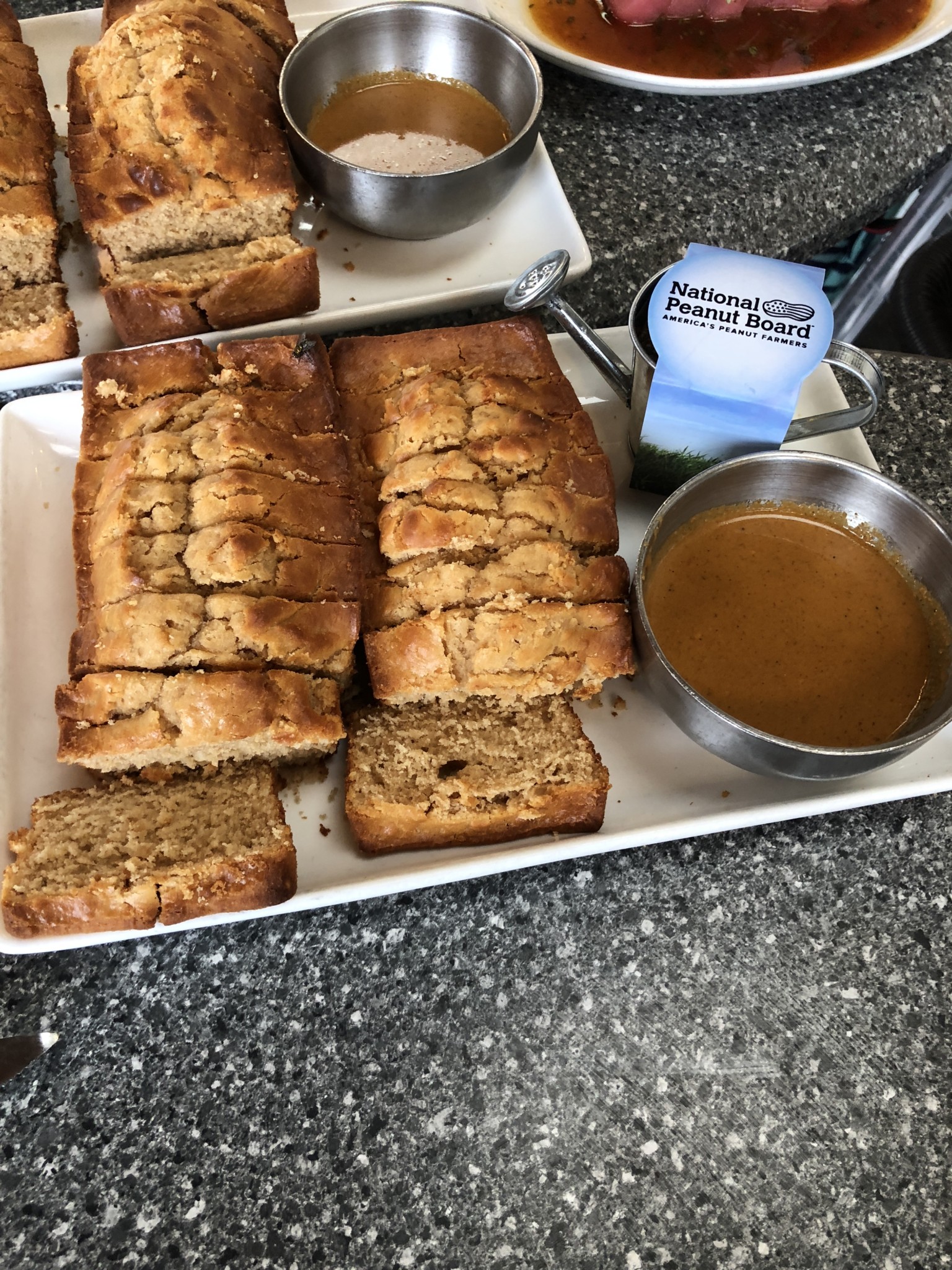
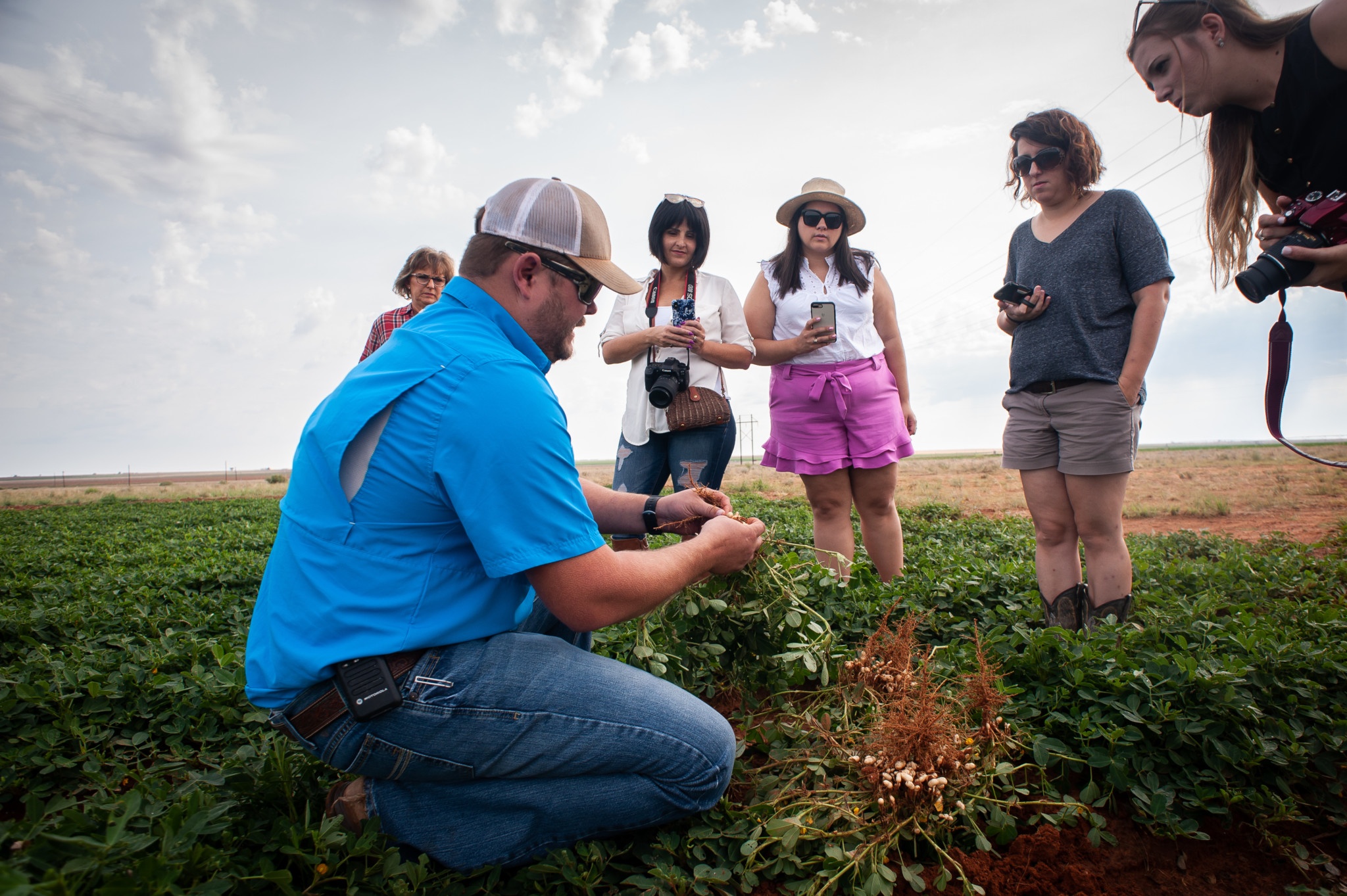
On Thursday, we boarded the party bus headed out to 4MB Farms in Brownfield, TX to meet with Mason Becker and Kathy Hickson to learn all about peanut farming. Mason is one of the board members on the West Texas Young Famers Association, which is an organization that promotes education on agriculture and involvement in legislation related to farming.
The night before our tour, West Texas received a significant amount of rainfall, which I learned was significant for farming. First because, rain from above the crops is so much better for them since it is distributed and, ultimately, how it was intended to be. Additionally, the rainfall saves a significant amount of money for the farmers since they did not need to water the crops that day. One quote that stuck with me when we were talking about the previous night’s rainfall is that “Agriculture is on a different level – the scale of costs is so much higher.” For example, as a non-farmer, I pay say about $100 a month for my water bill. The farmers may pay a hundred times that amount since they have to water the crops. It all depends on the crops they are farming and the amount of land they need to cover.
The first peanut field we visited had Organic Spanish peanuts being grown. As you can see from some of the pictures, one of the most interesting things I learned is that peanuts are actually apart of the roots of the plants and we had to pull them up (like you do a carrot or potato) to get to the peanut. For this type of peanut, the MB Farm team decided to place the peanuts in double rows (so they have two plants per row) to help them “canopy” and cover the dirt in the middle which prevents weed growth, which can be an issue with organic peanuts since they cannot use the weed killing products they typically do to prevent this growth.
A couple of things MB Farms does to prevent the weeds from overtaking the peanut plants is to physically hoe the plants and remove any sign of a weed. By catching a weed early on, it can limit how many plants are affected. Mason also researches new (organic) products which can prevent insects and weeds from ruining the plants. A few weeks before we visited, he mentioned spraying the peanuts with a combination of garlic oil and fish oil to prevent disease. One thing I learned about organic crops is that every product that is used on these crops must be inspected and reviewed by the FDA. Every farmer will file paperwork on their processes to maintain these organic crops and the FDA will doe periodic inspections. If they suspect anything is not following the organic protocol, the FDA may pull soil or tissue samples to confirm.
So how do they get the peanuts from the ground to the grocery store shelves? After growing the ground for about six months, the farmers use a tool to cut the leaves off the top of the plants. Then they will use a different tool to pull the peanut plants out from the ground and flip them over. The peanuts will field dry for 7-10 days (it’s all dependent on the humidity levels and if there’s any rain during the drying period). The farmers will then collect the peanuts and send them to a shelling facility where they are prepared to be shipped to the peanut product manufacturers (aka. Mars Candy, Skippy Peanut Butter, etc.)

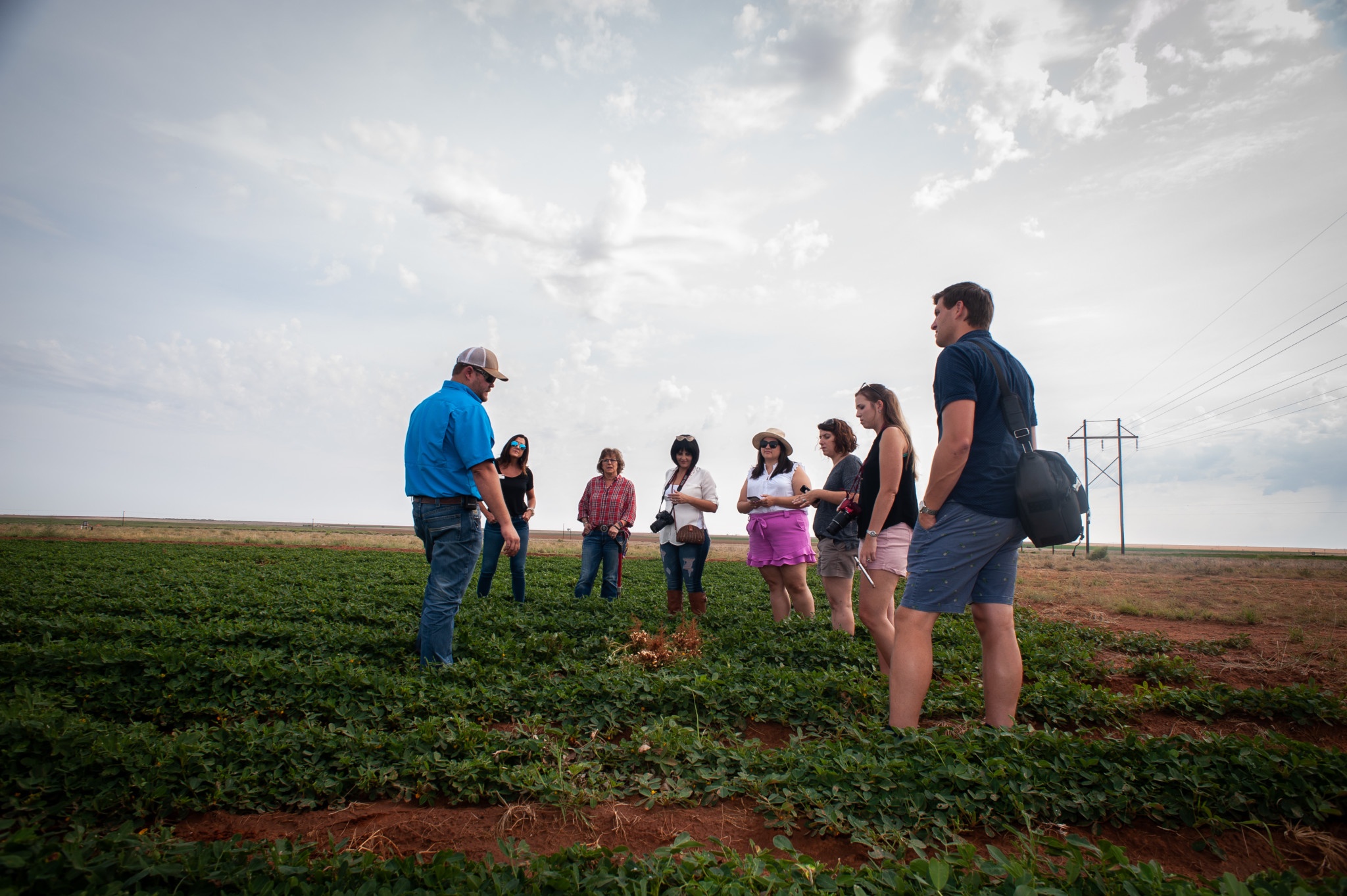
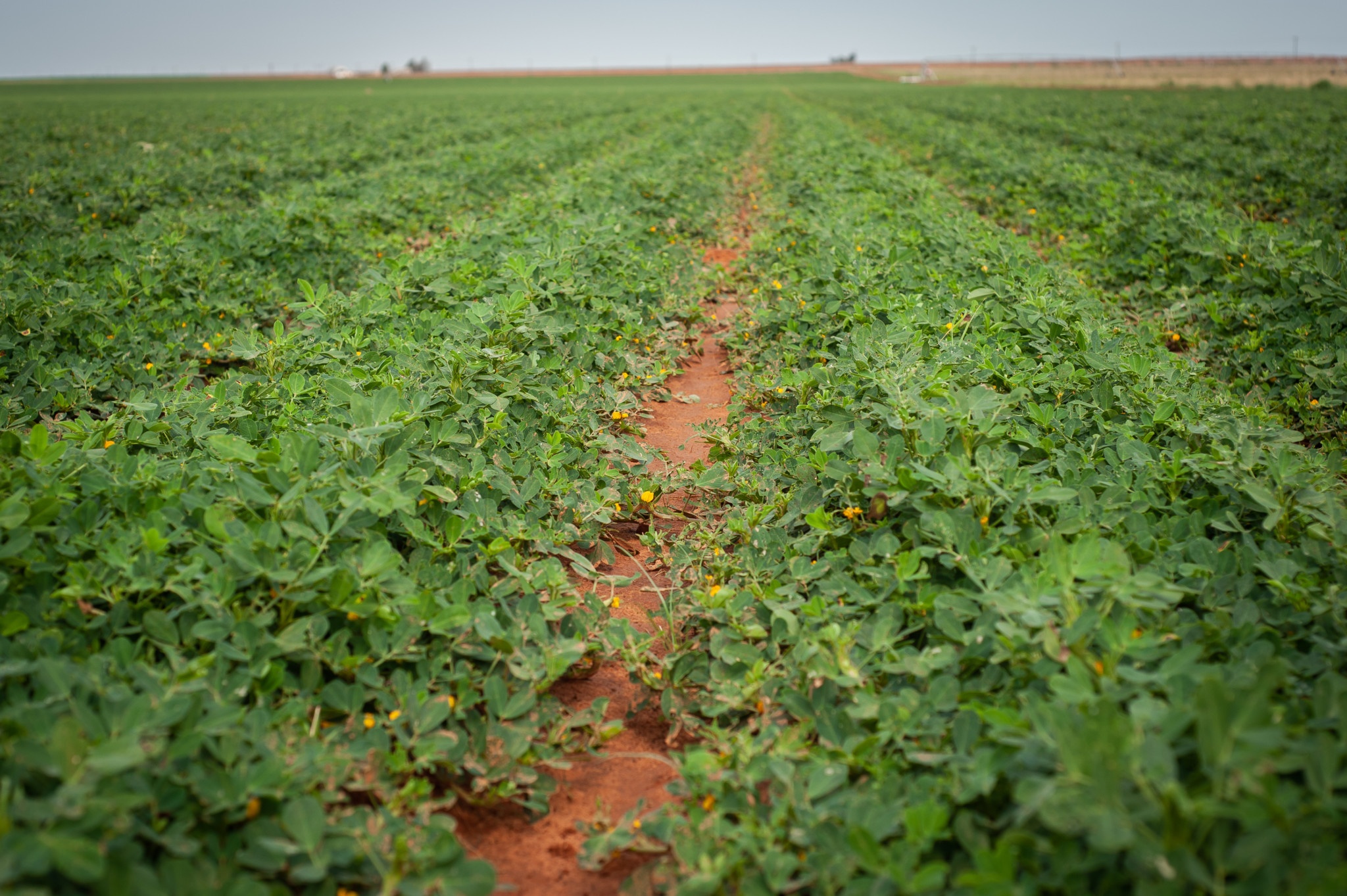
After touring the peanut fields, we had the opportunity to have lunch with more members of the West Texas Young Famers Association to learn more about their efforts and get a different perspective on growing peanuts. I had a great time at this lunch and am so grateful I had the opportunity to learn more about peanut farming (and the fried pickles were absolutely amazing)!
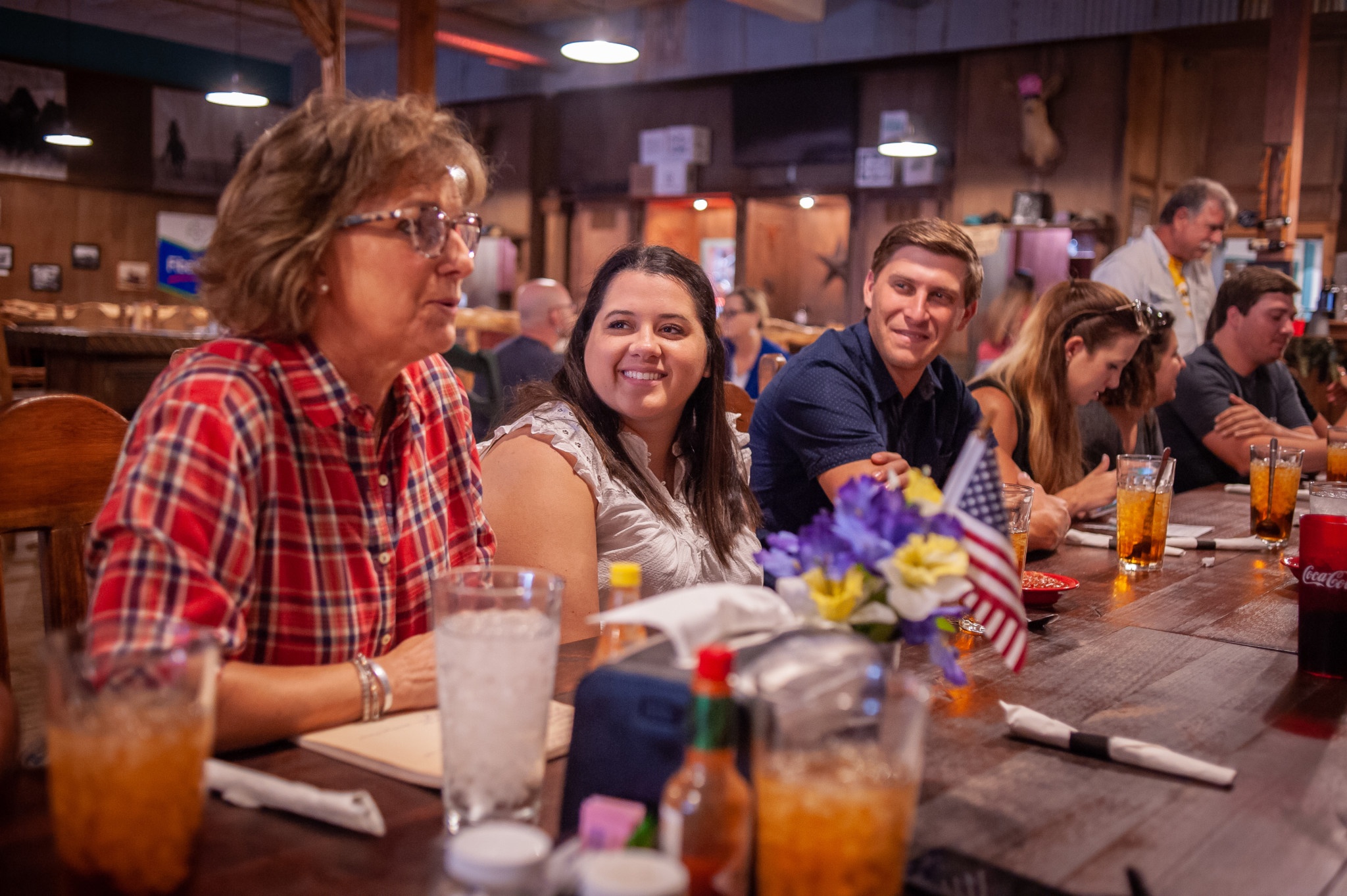
After lunch, we made a pit stop at the Birdsong Peanut shelling facility where we learned how one of the largest shelling facility prepares the peanuts to be provided to the merchant (think Mars, Skippy Peanut Butter, etc.). The shelling facility will weigh the peanuts, grade the peanuts (based on the size, quality of the peanuts and a variety of other factors), and will then prepare (aka. shelling them, keeping them in the shell, etc.) them for the merchants (based on their requirements).

Later that day, we re-grouped after getting a bit of R&R and cleaning up to head over to the McPherson Cellars where we had the opportunity to get a behind the scenes tour of how they make their wines (made with Texas grapes) and did a wine tasting with a few of their best selling wines. As a wine fanatic, I loved being able to see how McPherson makes their wine, including seeing them receive grapes that were harvested earlier in the day.
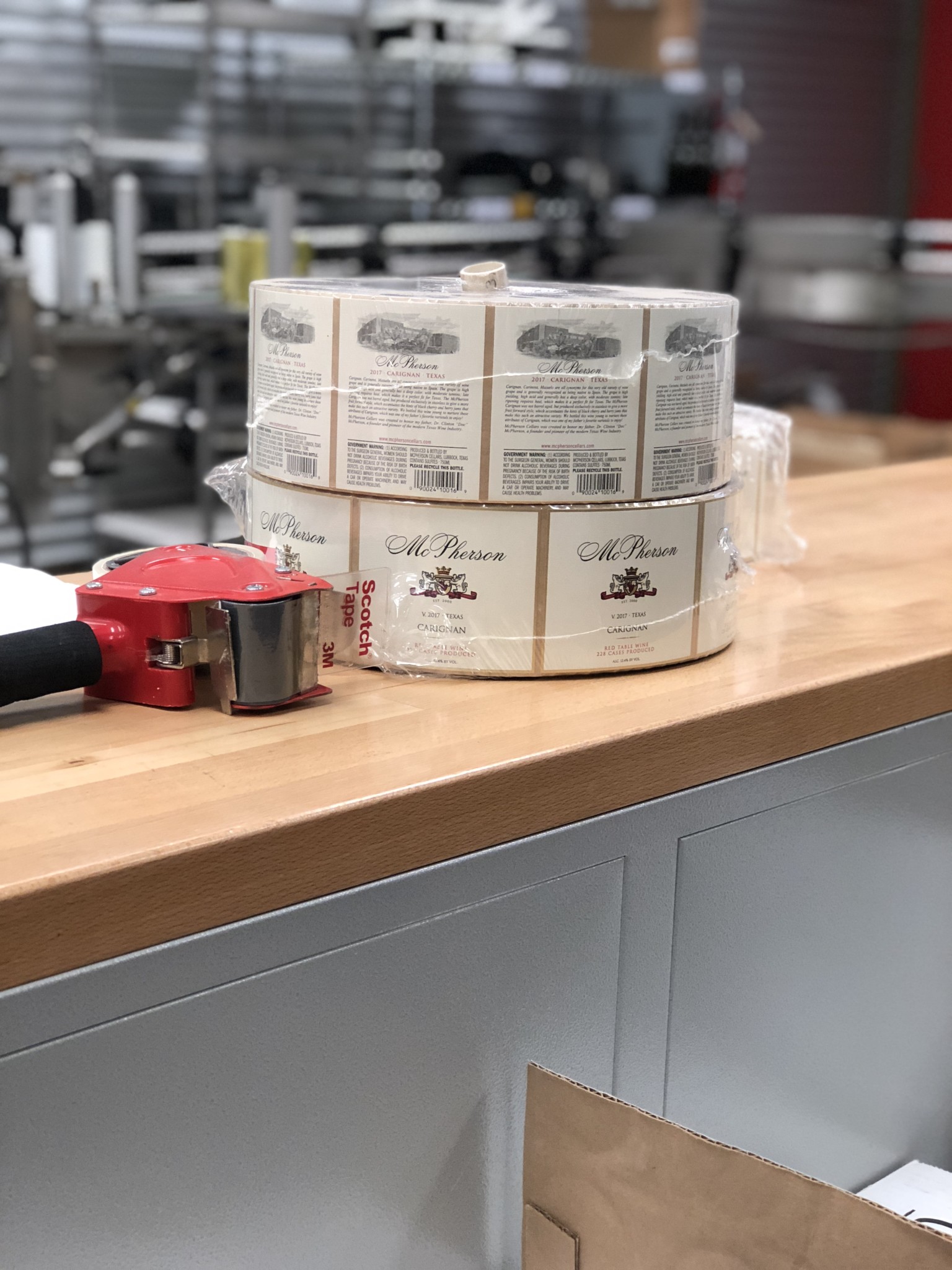
 After dinner, we decided to test out some unique ways to eat peanuts. First, we pour peanuts in a Dr. Pepper and ate them while drinking the soda. According to Breeze, this is a great way to eat peanuts while on a road trip since you only need one hand to drink/eat at the same time. I have to say – it was an unconventional way to eat peanuts and drink Dr. Pepper, but it was super delicious!
After dinner, we decided to test out some unique ways to eat peanuts. First, we pour peanuts in a Dr. Pepper and ate them while drinking the soda. According to Breeze, this is a great way to eat peanuts while on a road trip since you only need one hand to drink/eat at the same time. I have to say – it was an unconventional way to eat peanuts and drink Dr. Pepper, but it was super delicious!
The second taste test we had was a Fluffer-Nutter. This combination was something that Nasreen grew up with in the North East. Ultimately, it’s a different version of a peanut butter sandwich with Fluff. Since we couldn’t get our hands on the true fluff, we used Marshmallow Creme. This combination was absolutely delicious!! I am going to try and order some traditional Fluff to make this at home as a sweet treat. Seriously, y’all…you should try this!
Do you have fun Peanut Butter recipes? I would love to hear about them and try them out!


Fun Peanut Facts
Here’s seven things I didn’t know about peanuts (even though I eat a ton of peanuts and peanut butter) while I was on the tour:
- There are 4 different type of peanut varietals- Runner, Virginia, Spanish and Valencia. The Runner peanut is most commonly used for making peanut butter. The Virginia peanut is the peanut that comes to your mind almost immediately – it’s the peanuts you eat in the ballpark. The Spanish peanut is the one with the red skin and is often used for peanut candy, salted peanuts and also peanut butter. And, last but not least, the Valencia peanut which is sweeter in flavor and is used for boiled peanuts.
- Texas is the second largest peanut producing state in the country (right behind Georgia). We grow all four varieties of peanuts (and they also grow organic ones too…)
- Farming peanuts is far more water efficient than farming other nuts – it only takes 4.7 ounces to grow an ounce of peanuts (an ounce of almonds requires approximately 80 gallons of water). Not only do they taste great, but they have a reduced carbon footprint because they don’t use as much water or require as many fertilizers or pesticides.
- Peanuts are not actually nuts – they are legumes! Seriously, when I tasted the peanut straight from the ground, it tasted like the inside of a green bean or snap pea. It had that crispy, crunchy bite and I would not have been able to tell you the difference between a bean and a non-dried peanut.
- Peanuts are REALLY good for your health (YES, I can finally justify my peanut butter obsession). They are a good source of fiber, good fats and contain more than 30 essential vitamins and minerals, including Vitamin E, Magnesium and Folate.
- Peanuts are a nitrogen-fixing plant – so when a farmer grows peanuts in their fields, the peanut roots replenish the nitrogen in the soil – which is essential for growing crops. During the Texas Peanut Tour, we learned that Mason Becker was planning to grow other crops in the two fields that we visited and the peanuts being grown this year had prepared the soil for these new crops.
- The Texas Peanut Producer Board and National Peanut Board invest in research to eliminate food allergies (over the past 16 years, the National Peanut Board has earmarked $25 million to food allergy research, education and outreach). Now I am not a medical professional, so please consult with your doctor prior to testing this, but a new LEAP study discovered that introducing peanut products to infants early can reduce the risk of them developing a peanut allergy by up to 86%.

What’s one type of food you would love to see how it’s produced? Let me know in the comments below.

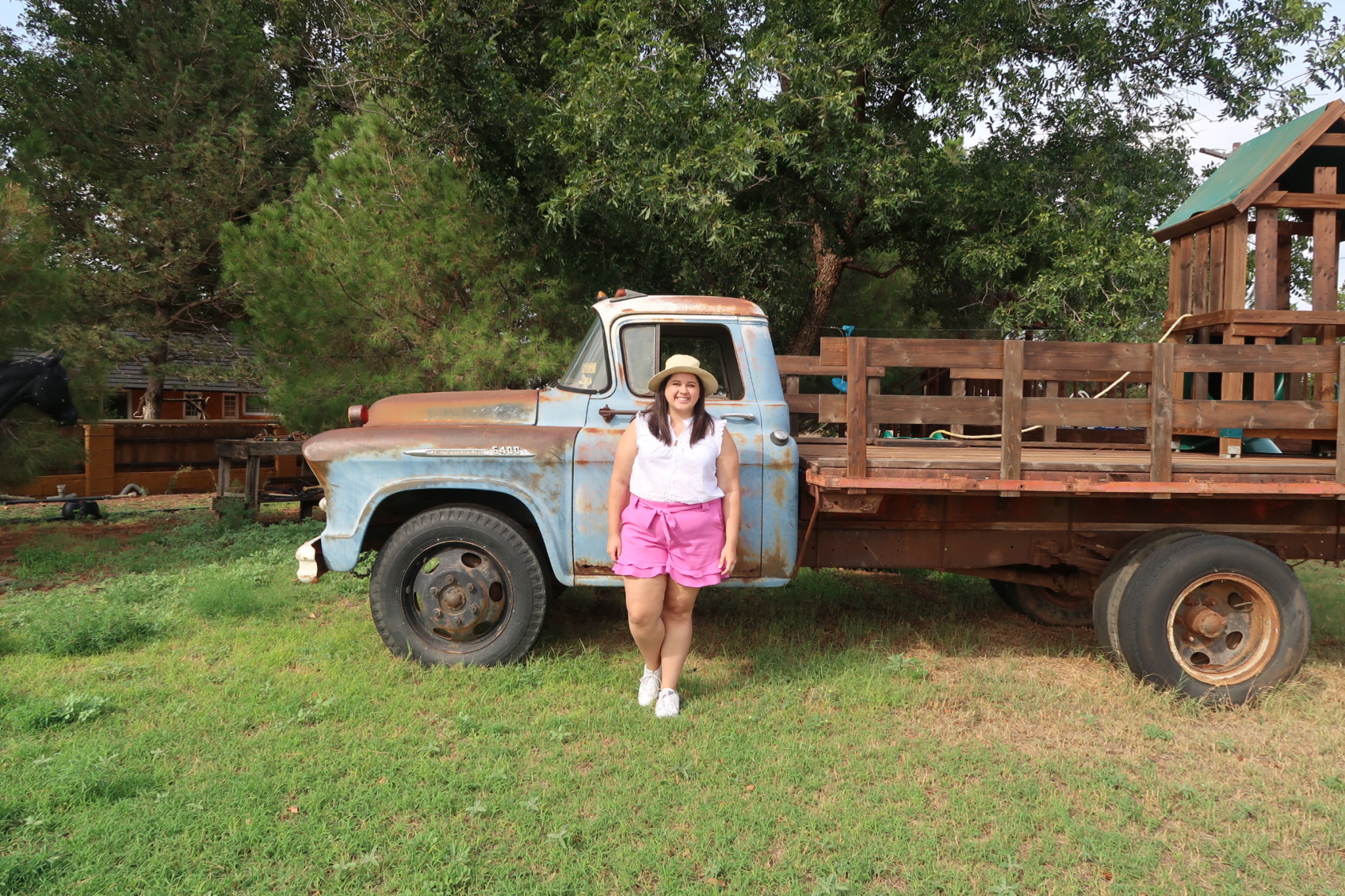

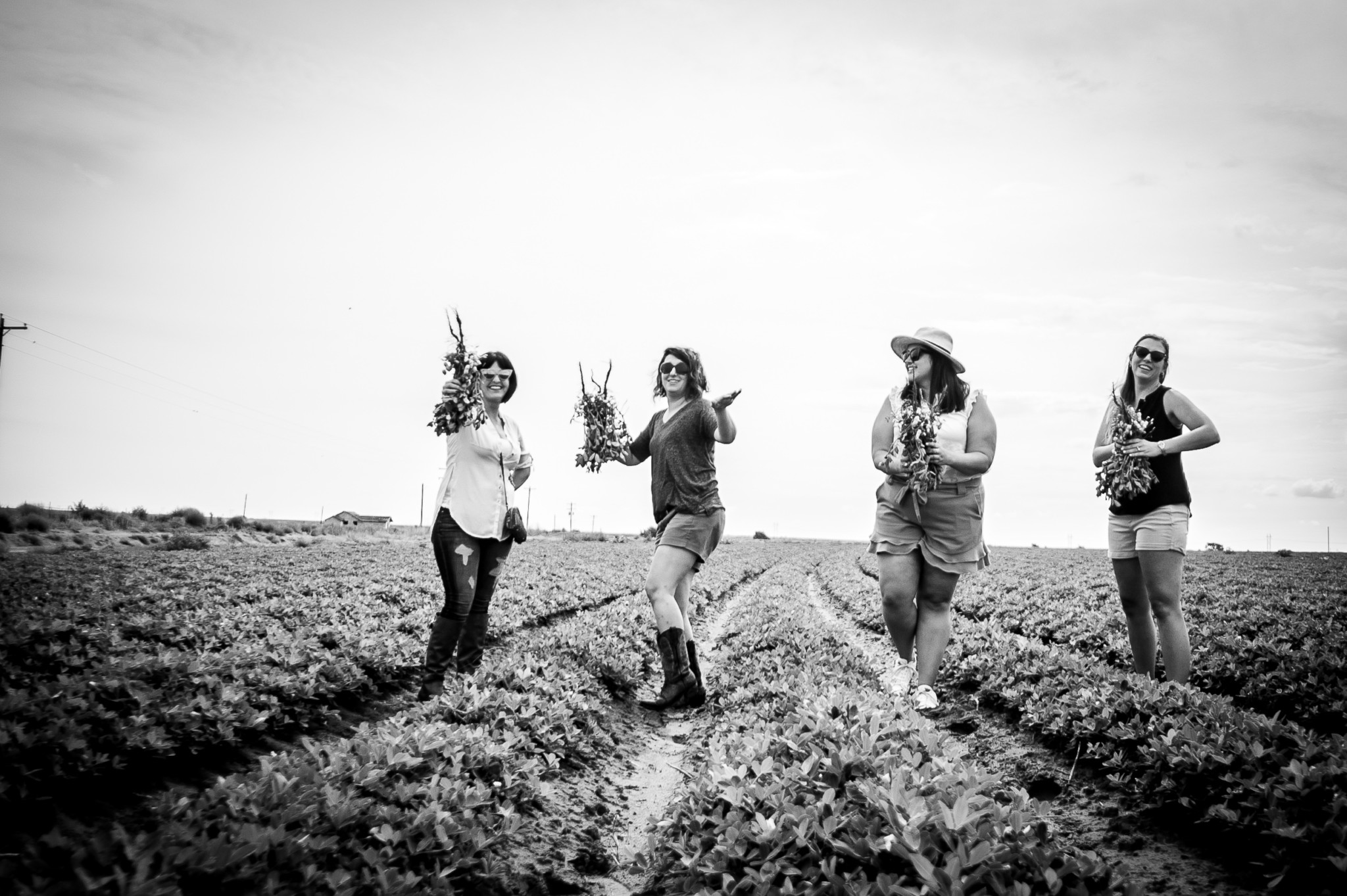
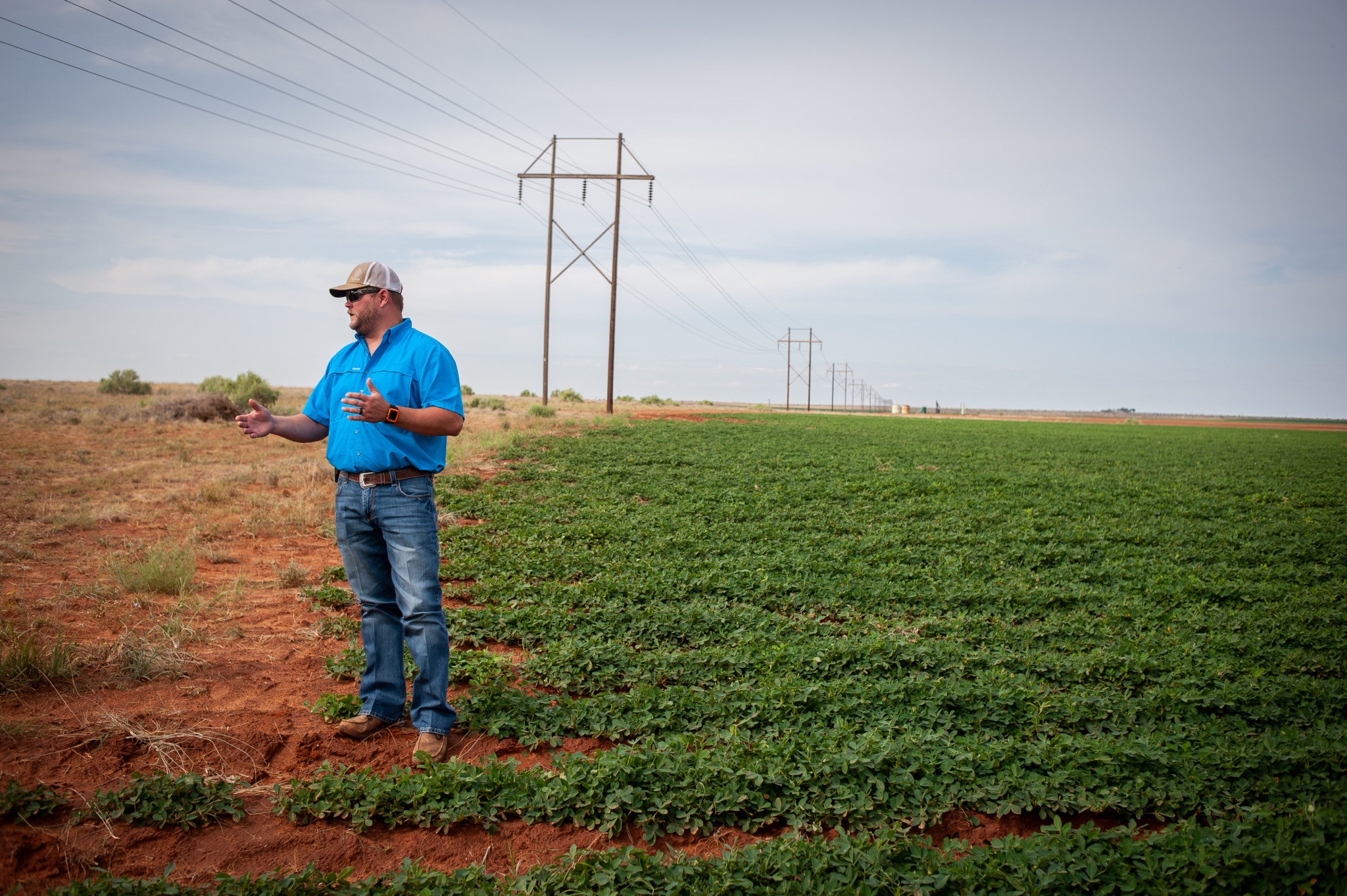
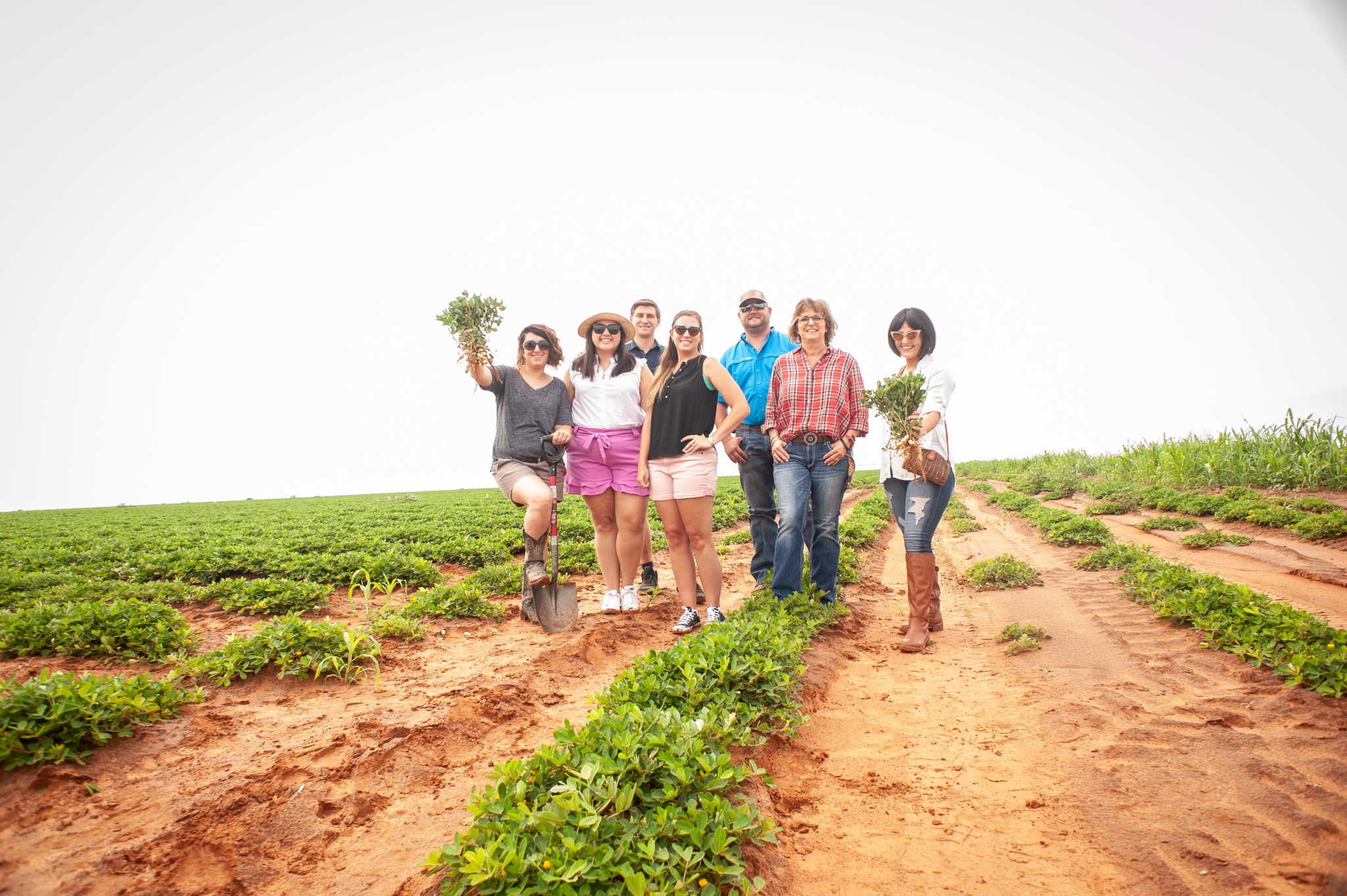
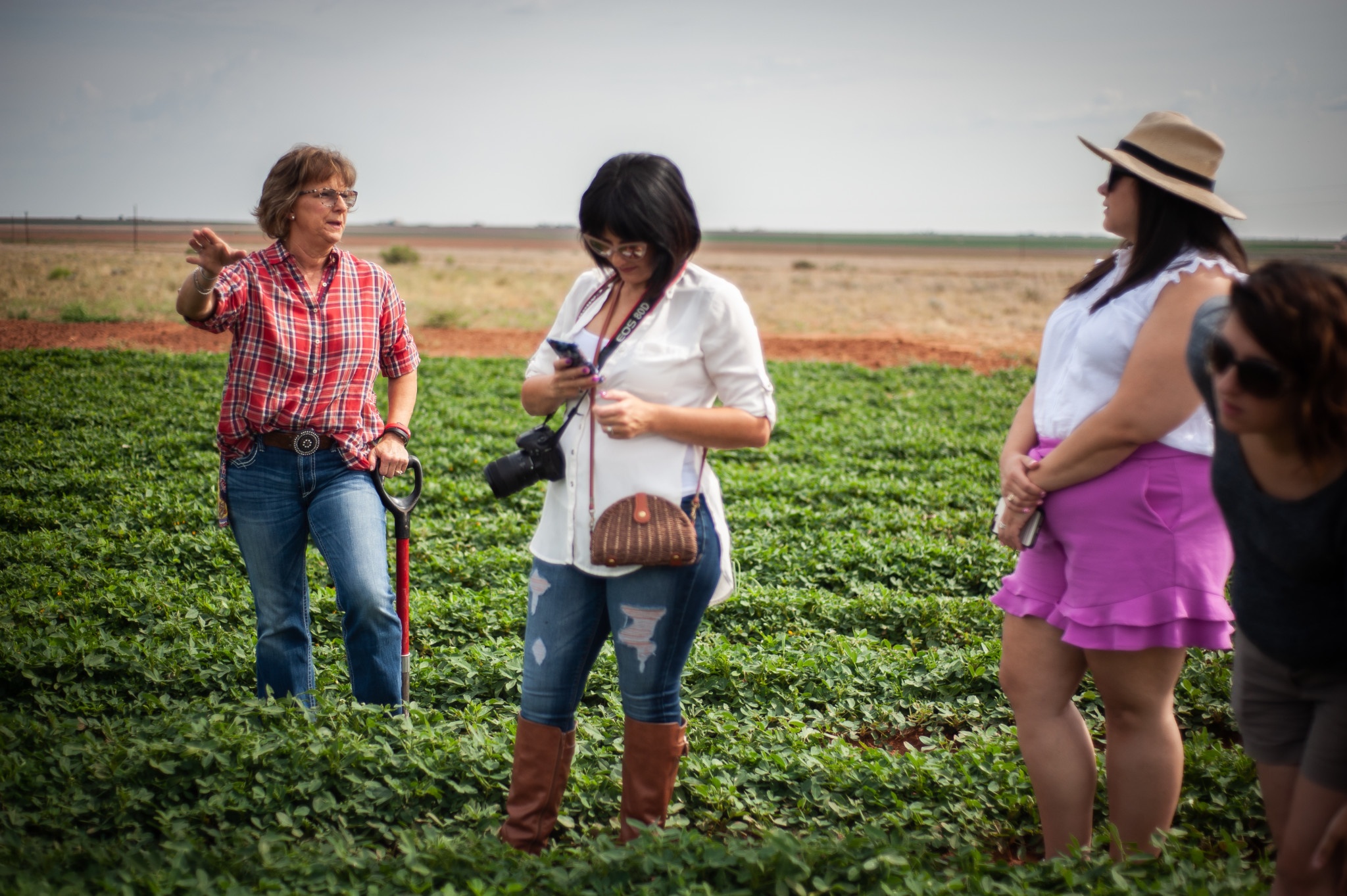
P.S. Looking for another Texas vacation spot? Make sure to check out my guide for the Perfect Weekend Getaway in Concan, TX!





Texas Peanut Producers Board is dedicated to spending 50 percent of our annual budget on research, approximately $350 thousand annually. In an effort to keep our farmers informed, our peanut research team got together and wrote a series of articles over successes in the industry.